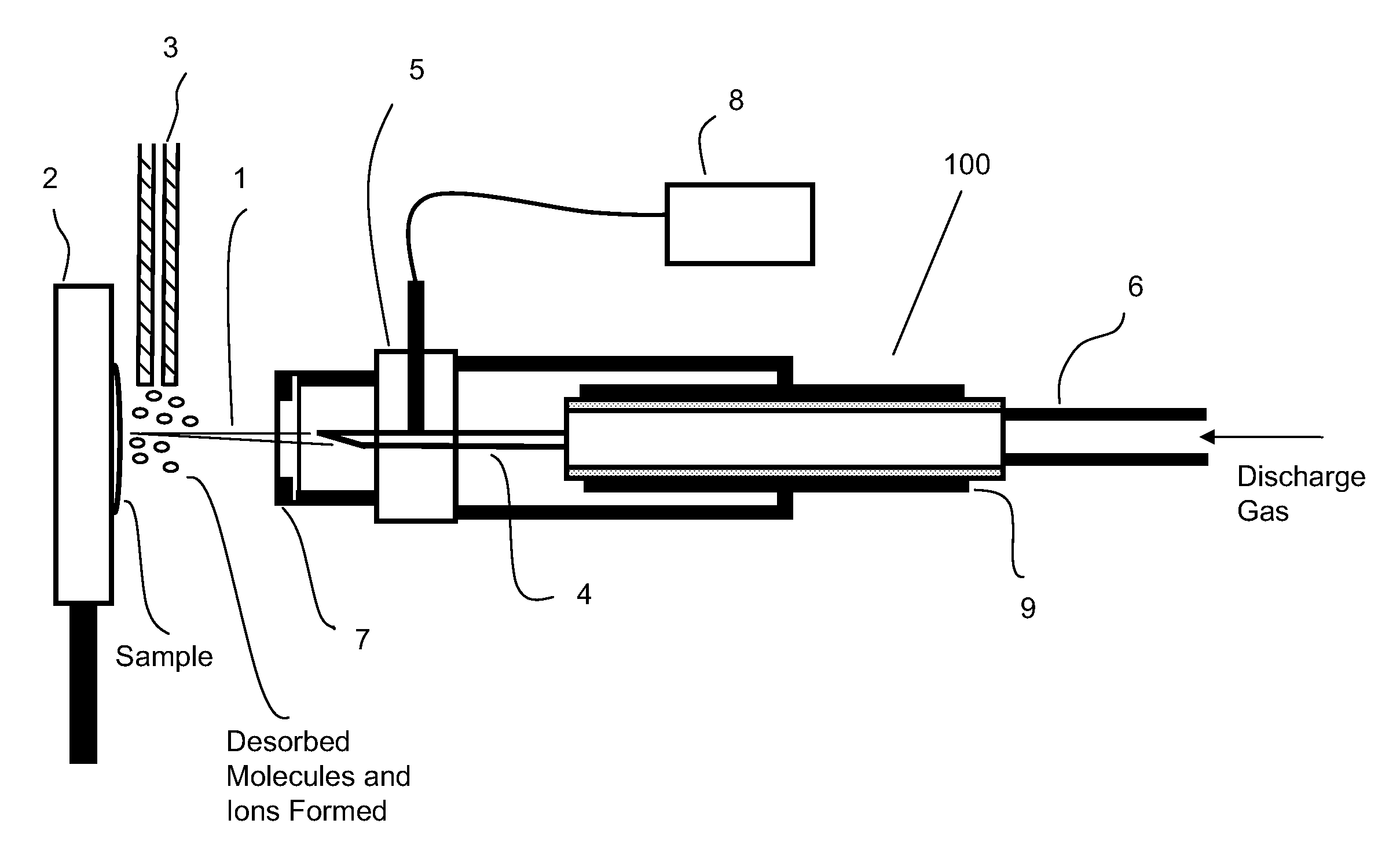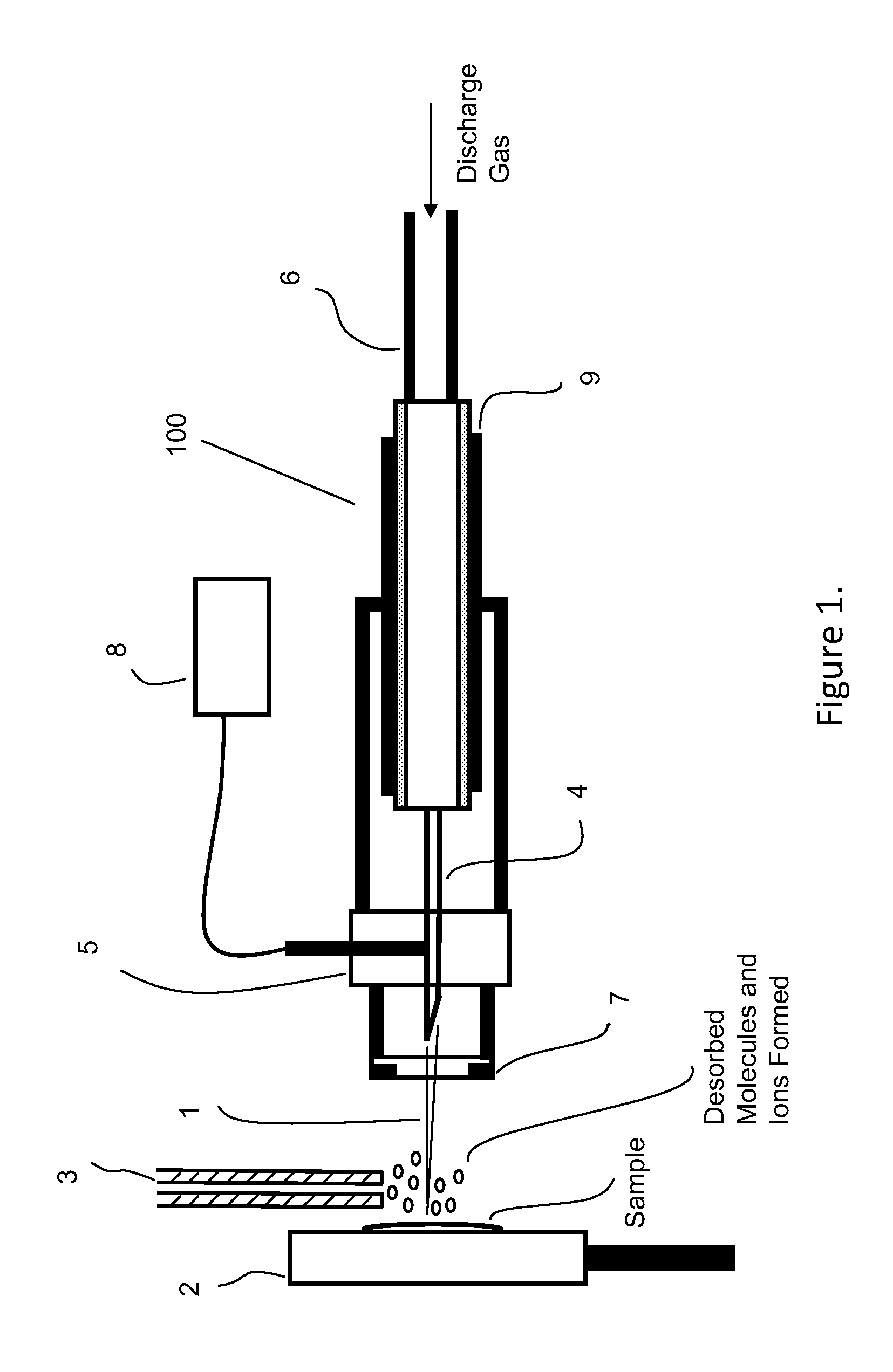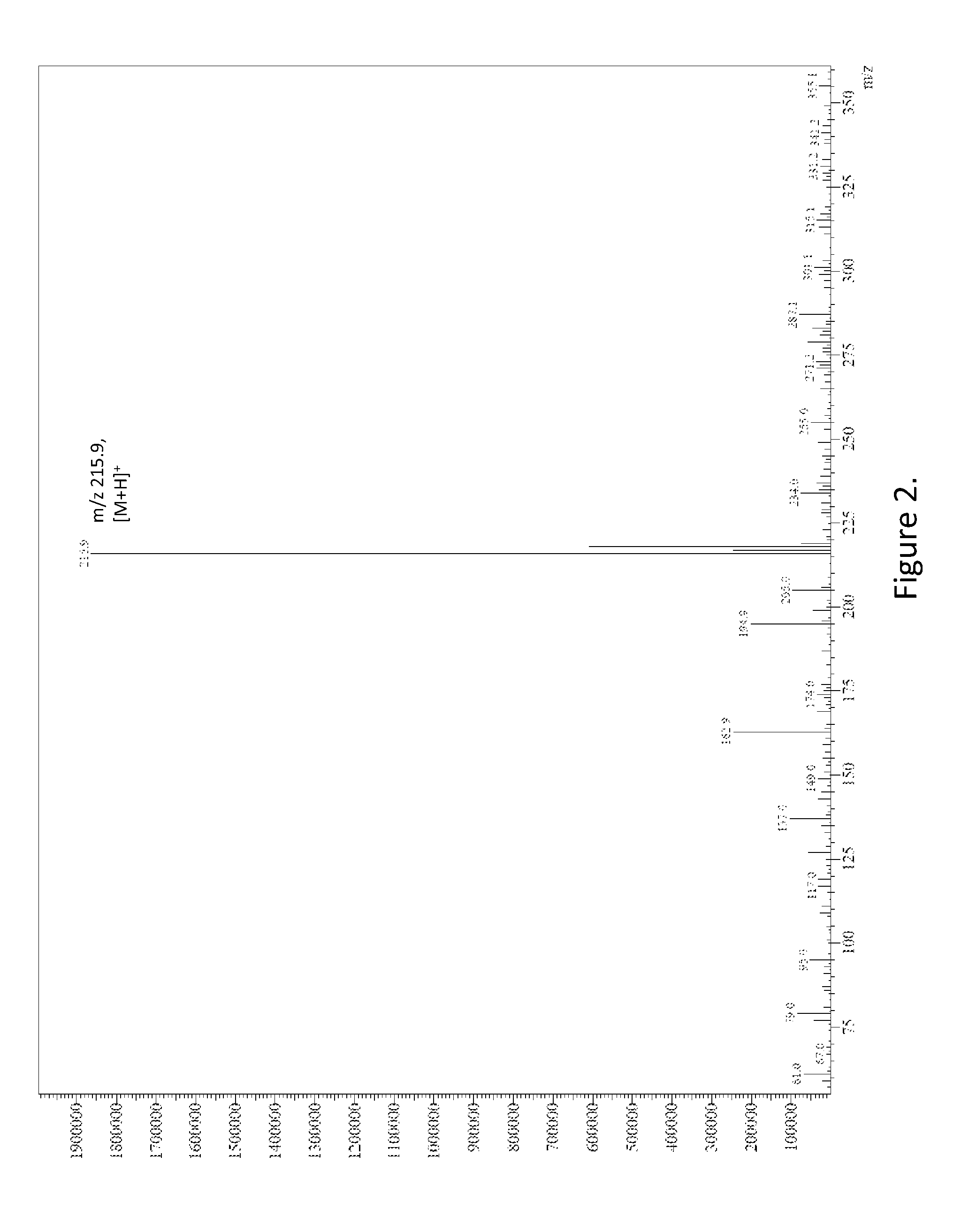Device for desorption and ionization
a technology of ionization and desorption, which is applied in the direction of separation process, particle separator tube details, instruments, etc., can solve the problems of difficult modification of current commercial ion sources, high speed of implementing techniques, and uncertain sampling area of analyte, etc., to facilitate the location of sampling areas, enhance the ionization efficiency of sources, and stabilize the corona stream
- Summary
- Abstract
- Description
- Claims
- Application Information
AI Technical Summary
Benefits of technology
Problems solved by technology
Method used
Image
Examples
Embodiment Construction
[0020]The schematics of the DCBI source is shown in FIG. 1 and it includes a sample probe 100 for generating the corona beam 1, a sample support 2 for placing the samples, and an ion inlet 3 for introducing the ions formed into a device capable of ion analysis. The corona beam 1 was formed by applying a direct current voltage (2˜5 kV) to the tip of the metal tube 4 when a stream of gas (preferably He) flows through the metal tube 4 at a rate ranging from 1 to 2 L / min. The supplied gas can be heated to 150˜350° C. before it reaches the sample support 2 for thermally desorbing the analytes. The desorbed gaseous species are ionized by interaction with energetic particles generated in the corona discharge under the atmospheric pressure. The ions formed are then delivered into a mass spectrometer or other devices through the ion inlet 3 for further analysis.
[0021]The solid analytes need to be thermally desorbed from the surface first. Therefore the samples normally are volatile or semi-v...
PUM
 Login to View More
Login to View More Abstract
Description
Claims
Application Information
 Login to View More
Login to View More - R&D
- Intellectual Property
- Life Sciences
- Materials
- Tech Scout
- Unparalleled Data Quality
- Higher Quality Content
- 60% Fewer Hallucinations
Browse by: Latest US Patents, China's latest patents, Technical Efficacy Thesaurus, Application Domain, Technology Topic, Popular Technical Reports.
© 2025 PatSnap. All rights reserved.Legal|Privacy policy|Modern Slavery Act Transparency Statement|Sitemap|About US| Contact US: help@patsnap.com



